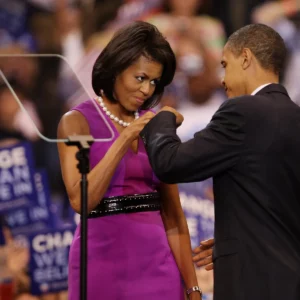The Talawa Technique is a unique approach to movement that is rooted in African-based traditions and embraces community, respect, and connection. The Talawa Technique greeting is an essential aspect of this practice, and it is important to understand its significance.
THE GREETING: HONORING THE EARTH, ANCESTORS, COMMUNITY, MIND, PRESENCE, AND SPIRIT/EMOTIONS.
The Talawa Technique greeting is an amalgamation of various traditional greetings. In many African-based traditions, it is customary to touch the earth or the ground. The earth is what holds us together and is considered a big drum that plays the vibrations of our lives, providing the nourishment that keeps us alive. When we touch the earth, we respect that which brings us together.
ACKNOWLEDGING ELDERS AND ANCESTORS
Touching the ground has an additional meaning. It also represents respect for the road traveled or the distance traveled by someone else so that our journey is made shorter, and gratitude for the support we have received in our own journey. For that reason, it is customary to touch the ground or the feet of a teacher or someone we consider to be an elder.
BEFORE THE GREETING RITUAL – ACTIVATING THE SPACE
Before beginning the Talawa Technique greeting, it is important to activate the space by walking around and greeting everyone. This serves to energize the space and create a sense of community amongst the participants. By acknowledging and greeting each other, we affirm that we are on a journey together and that we do not travel alone.
Put on low rhythmical music for this, or if you have drummers have them provide an ambiance. Use the entire space which would be used for the class. Allow this to take time. Encourage handshakes and or hugs, but a greeting physicality is provisioned. This warming of the space can be expanded on by having people have to develop an individual handshake with everyone they meet (great for kids class) or to have people move together in some way as they meet. This is designed to encourage limbic resonance and starting to mirror each other.
Regarless of if you have initiated a simple warming of the space with simple hugs and greeting or a more elaborate version, watch as people warm up to each other and start to mirror eachothers tempo and energy. When the energy seems to flow and people are more or less in the same “space” expand into a circle to start the circular warm up.
CIRCLE WARM-UP:
After activating the space, organize the participants into a circle. Have a person enter the center of the circle to initiate a warm-up sequence. This warm-up should feel like fairly free dancing. Use music such as springy rhythmical compositions or groovy soca. Make sure it is rhythmical and melodically music. Avoid overly electronic and repetitive music for this section.
The purpose of the circle warm-up is to encourage participants to copy the person in the center to the best of their ability. This trains proprioception and the mirroring of action. It’s also polycentric, allowing for the connection of isolating and moving each body part in tandem. This warm-up encourages participants to map their bodies and how they move in relation to others.
Multiple Leaders in the Circle:
To link the participants to different bodies and experiences, allow multiple leaders of movement to enter the circle in the beginning. Even if there’s one main teacher, encourage proficient movers in the room to enter the center so that the circle gets to link to multiple bodies and experience difference and the value of difference as well as sameness.
STRUCTURING THE GREETING
Stepping out on the left to open and stepping out on the right to close.
When organizing ourselves in the circle, we start the Talawa Technique greeting by stepping out on the left foot, which is considered to be the ancestral direction. This symbolizes our connection to our ancestors and the acknowledgement of their presence in our lives. We touch the ground with our left hand, showing respect for the road that has been traveled by those who came before us and paved the way for our journey.
At the end of the class, we repeat the greeting, but this time we step out on the right foot. This is because the right side is considered to be the side of light and positivity, representing the journey forward towards our goals. This final greeting serves as a way to acknowledge and appreciate the journey that we have taken together, and to look forward to the future.
Touching the Ground
In many African-based traditions, touching the earth or ground is a way of acknowledging and respecting the foundation that holds us all together. The earth is seen as a big drum that plays the vibrations of our lives and provides the nourishment that keeps us alive. By touching the ground, we show reverence for the presence of the earth and the role it plays in our lives. Additionally, touching the ground is a way of showing respect for the road traveled by someone else, thanking them for the support they have provided, and shortening our own journey.
Touching the Forehead
After touching the ground, we touch our foreheads to acknowledge the mental presence that we are bringing to the circle. This gesture is a way of showing respect for the intelligence and knowledge that everyone brings to the gathering.
Touching the Eyes
We then touch the ground again and touch our eyes to bless what our eyes can see and to acknowledge the physical presence of everyone in the circle. This gesture is a way of showing respect for the beauty and diversity of the community.
Touching the Heart
After touching the ground and eyes, we touch our hearts to bless and acknowledge the emotional and spiritual presence of everyone in the circle, including the ancestors. This gesture is a way of showing respect for the innermost self and the connection we all share with each other.
Finish by touching the ground and step back.
USE OF THE CIRCLE
We stand in a circle for a number of reasons. One dominant reason is that we see ourselves in others. Standing frontally, looking into a mirror, is an introverted and ego-centered orientation. Standing in a circle reflects oneself in the movement and presence of others and acknowledges “the community of self.” In a circle, you see the movement multiplied with a difference, automatically getting it from multiple angles. It allows the energy to flow between participants and provides a spiritual focus for ancestors to join in the circle. It affirms and creates community, lessens self-consciousness and self-doubt, and strengthens the idea that one is working in communion and not alone, with a focus on the whole and not the singular.
Embracing Individuality
The circle also provides more of an opportunity to work on individuality because one is not trying to become a mirror reflection of another but rather taking knowledge from the center of the circle and sharing it through their own body. It also allows you to sense how other bodies feel while doing the same action. The sense of community and support created by the circle makes it easier to work through mistakes and imperfections. This creates a sense of affirmation, as others are also working through their imperfections.
Starting and Ending Class with the Greeting
When organized in the circle, the greeting starts, always stepping out on the left foot to start with, as this is the ancestral direction. At the end of the class, there is a repeat of the greeting, but it starts by stepping out on the right foot. This repetition signifies a sense of closure and completeness, as we return to the same place we started, having learned and grown through the experience.
If drummers are present the greeting is also done towards them, as well as if there is an elder teacher.
When the Black Power movement raised their fist in the air, it was a symbolic action that meant one’s actions in the world were powered by the ancestors and that they were just and in keeping with divine order. It was a way of acknowledging the resistance to systemic oppression that Black people have endured, and also acknowledging what has been passed down from their ancestors. This spiritual aspect is often under-communicated in discussions about resistance to oppression.

The Use of KA Greeting
The KA is a physical greeting that involves bumping fists together. It represents the energy that enables us to take action in the world. By bumping fists, we symbolically combine our powers to act in the world with those of others.
The KA Warrior Acknowledgment
Holding two fists together at chest height is a warrior acknowledgment given to a teacher or fellow warrior to express gratitude for increasing one’s ability to act in the world. It is a sign of respect and appreciation for the knowledge and skills that have been imparted.
Using KA Greeting in Class
The KA greeting can be used in class to signify the end of a section of class or an exercise. This can be done by a teacher to students as a way to acknowledge their hard work and growth in the class. Similarly, students can use the KA greeting to show appreciation to their teacher for the lessons they have learned.
Communicating Learning and Excellence
In addition to expressing gratitude, KA can also be used as a way to communicate learning and excellence. For instance, a student can use the KA greeting to quietly inform their teacher that they have learned something and feel more powerful as a result. On the other hand, a teacher can use the KA greeting to show that they have learned something from a student or that they have performed a movement or action exceptionally well.

MODERN ITERATIONS OF THE KA GREETING
The KA greeting has evolved over time, and one modern iteration of it can be seen in the dap and Black power handshake. These gestures were born in African American communities during the 1960s and 1970s and have since become widely recognized as symbols of unity, strength, defiance, and resistance. However, their historical significance is often overlooked.
The dap originated among Black G.I.s stationed in the Pacific during the Vietnam War. At a time when the Black Power movement was growing and racial tensions were high in America, the dap became a way for Black soldiers to express their commitment to looking after one another. The physical act of the dap was born out of a pact made by Black soldiers to ensure their survival in a racially turbulent atmosphere. This act of solidarity was especially important given reports of Black soldiers being shot by White soldiers during combat.
Today, we see the dap and Black power handshake being used by youths, athletes, and even President Obama as a way to express cultural unity and identity. These gestures have become important symbols of Black consciousness and are a testament to the resilience and strength of the African American community.
